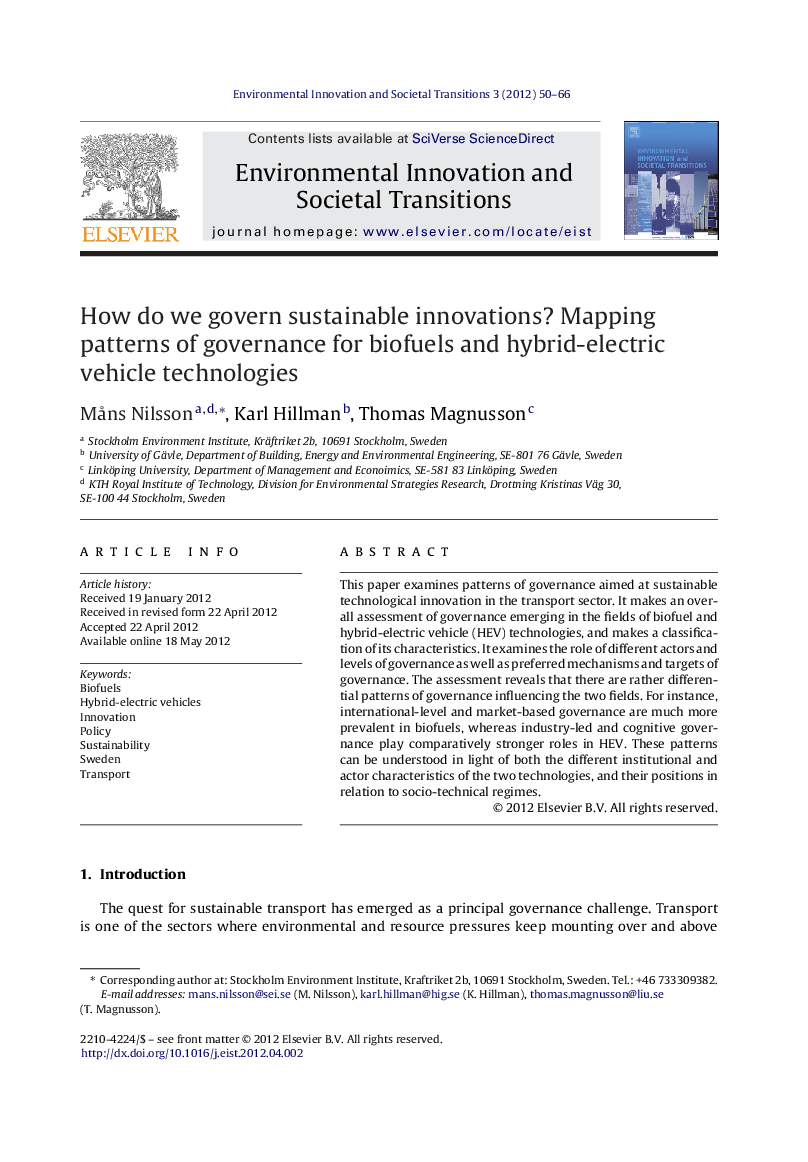| کد مقاله | کد نشریه | سال انتشار | مقاله انگلیسی | نسخه تمام متن |
|---|---|---|---|---|
| 108303 | 161896 | 2012 | 17 صفحه PDF | دانلود رایگان |
This paper examines patterns of governance aimed at sustainable technological innovation in the transport sector. It makes an overall assessment of governance emerging in the fields of biofuel and hybrid-electric vehicle (HEV) technologies, and makes a classification of its characteristics. It examines the role of different actors and levels of governance as well as preferred mechanisms and targets of governance. The assessment reveals that there are rather differential patterns of governance influencing the two fields. For instance, international-level and market-based governance are much more prevalent in biofuels, whereas industry-led and cognitive governance play comparatively stronger roles in HEV. These patterns can be understood in light of both the different institutional and actor characteristics of the two technologies, and their positions in relation to socio-technical regimes.
► There is very little governance analysis presented in the field of sustainable transport innovation.
► Who governs and how to govern are two key dimensions to understand governance patterns.
► Publicly led and market-based governance are more prevalent in biofuel than in hybrid-electric vehicles.
► Institutional, political and regime theories can explain emerging governance patterns.
Journal: Environmental Innovation and Societal Transitions - Volume 3, June 2012, Pages 50–66
